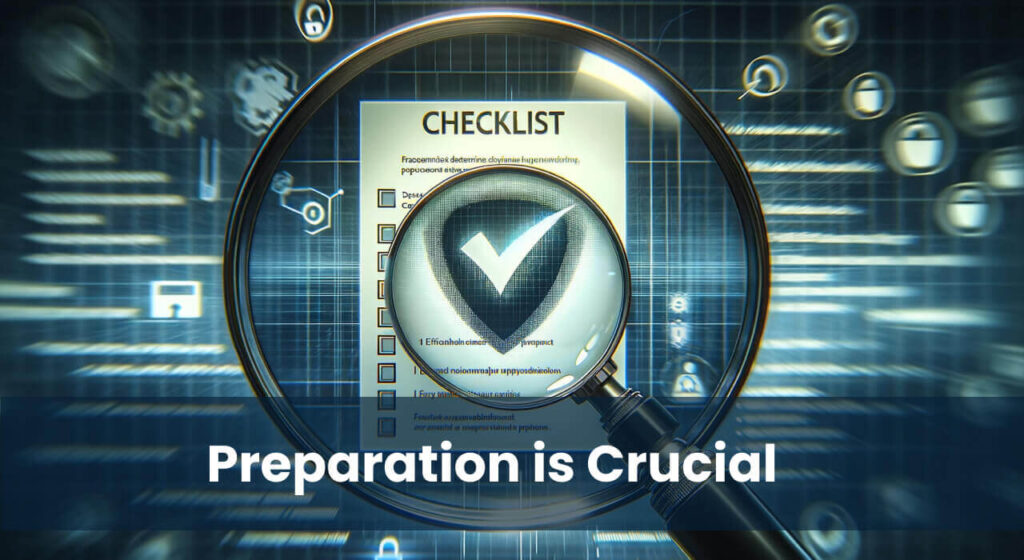
Why Gap Analysis is Key to Small Business Cybersecurity
The Digital Landscape and Its Threats
In today’s digital age, small businesses (SMBs) are increasingly reliant on technology for their daily operations. This reliance, while a driver of efficiency and growth, also exposes them to a growing landscape of cyber threats. From malware and phishing attacks to data breaches and ransomware, even the most seemingly innocuous business can become a target.
Beyond Reactive Response
While reacting to security incidents is crucial, a proactive approach is essential for sustainable cybersecurity. This involves anticipating and mitigating potential risks before they materialize. One key tool in achieving this proactive stance is gap analysis.
A Roadmap to Better Security
A gap analysis in cybersecurity acts as a systematic assessment of your business’s current security posture. It identifies the gaps – the areas where your existing security controls are lacking or missing – compared to industry best practices and regulatory requirements. By identifying these gaps, you can prioritize and implement specific measures to strengthen your defense and proactively address vulnerabilities.
This introduction sets the stage for the rest of the article, highlighting the cybersecurity challenges faced by SMBs, emphasizing the importance of proactive measures, and introducing the concept of gap analysis as a key tool for achieving a strong security posture. It provides a brief overview of the purpose and benefits of conducting a gap analysis, leaving further details to be explored in subsequent sections.
Conducting a gap analysis involves several key steps, including defining the scope, selecting a framework, gathering data, identifying vulnerabilities, prioritizing gaps, and developing a remediation plan. For a comprehensive guide on the best practices for conducting a security gap assessment, refer to this article: [Best Practices for Conducting].
Understanding Cybersecurity Gap Analysis

A Proactive Approach: A gap analysis in cybersecurity is a systematic process that evaluates the difference between your organization’s existing security posture and a desired or required level of protection. It focuses on identifying vulnerabilities and areas where security controls are lacking. This allows you to prioritize and address weaknesses before they are exploited by attackers.
Beyond Detection: While vulnerability assessments and penetration testing are also valuable tools in cybersecurity, they differ slightly in their role within a gap analysis. Vulnerability assessments identify specific weaknesses in your systems and software, whereas penetration testing simulates real-world attacks to attempt to exploit these vulnerabilities. Gap analysis, however, takes a broader view, incorporating the findings from assessments and tests alongside industry best practices, regulatory requirements, and your specific business needs. By analyzing the larger picture, it helps you understand not just where your systems are vulnerable, but also where your security controls are insufficient to mitigate those vulnerabilities.
Benefits for SMBs: Performing a gap analysis offers several valuable benefits for small businesses, particularly considering their often limited resources. Here are some key advantages:
- Cost-effectiveness: Gap analysis helps you prioritize your security investments by focusing on the most critical areas needing improvement. This allows you to optimize your budget and avoid unnecessary spending on controls that may not be immediately essential.
- Improved Security Posture: By identifying and addressing weaknesses, gap analysis strengthens your overall security posture. This makes your business less susceptible to cyberattacks and reduces the risk of data breaches and other security incidents.
- Informed Decision-Making: Gap analysis provides a clear roadmap for implementing security improvements. It helps you make informed decisions about the types of controls needed, resource allocation, and the overall direction of your cybersecurity strategy.
By understanding the purpose and benefits of gap analysis, SMBs can leverage this powerful tool to proactively manage their cybersecurity risks and build a more resilient defense against evolving threats.
A Step-by-Step Guide to Conducting Your Gap Analysis

Preparation is Key: Before diving into the analysis itself, preparation is crucial. Here’s what you need to do:
- Define the Scope: Clearly define the boundaries of your analysis. This could be specific systems (e.g., customer database), data types (e.g., financial records), or your entire network infrastructure.
- Assemble the Team: Form a cross-functional team with diverse expertise. This may include IT personnel, security specialists, and business representatives familiar with your organization’s risk profile and regulatory requirements.
Gathering the Information: Now it’s time to gather information about your current security posture. Here’s what you need to understand:
- Existing Controls: Identify and document the security controls currently in place. This could include firewalls, antivirus software, access controls, encryption, and data backup procedures.
- Security Policies and Procedures: Review and document existing security policies and procedures. These documents outline your organization’s stance on data security, user access, and incident response protocols.
- Security Incident History: Analyze any past security incidents your organization has experienced. This history can provide valuable insights into potential vulnerabilities and areas that need further attention.
- Industry Best Practices and Regulations: Familiarize yourself with relevant industry best practices and regulatory requirements for your sector. These standards establish benchmarks for adequate security measures.
Analysis and Gap Identification: Now you have gathered the necessary information, it’s time to analyze it and identify the gaps:
- Comparison: Compare your existing controls, policies, and incident history against the industry best practices and regulatory requirements you identified.
- Identifying Gaps: Based on the comparison, pinpoint areas where your organization falls short. This could be missing controls, inadequate policies, or insufficient procedures.
- Prioritization: Not all gaps are created equal. Prioritize the identified gaps based on their potential impact on your organization. Consider factors like the sensitivity of the data involved, the likelihood of a threat exploiting the gap, and the potential consequences of a successful attack.
By following these steps, you can effectively conduct a comprehensive gap analysis, gaining valuable insights into your organization’s security posture and identifying areas for improvement. This paves the way for the next step: addressing the gaps and implementing solutions to strengthen your overall cybersecurity defense.
Implementing Solutions for Stronger Security
Once you’ve identified the vulnerabilities and gaps in your cybersecurity posture, it’s time to take action and implement solutions. Here are some key methods to address the gaps:
- Implement New Security Controls: Based on your identified gaps, you may need to invest in new security controls. This could involve acquiring security software (firewalls, endpoint protection), hardware upgrades (network segmentation), or employee training programs to enhance their cybersecurity awareness.
- Strengthen Existing Controls: Not all gaps require entirely new solutions. Existing controls like firewalls and access controls might need stronger configurations or updated settings to be more effective.
- Review & Revise Policies & Procedures: Your security policies and procedures may need to be reviewed and revised to address the identified gaps. This could involve updating access control protocols, data encryption practices, or incident response plans.
- Continuous Monitoring & Maintenance: Security is a continuous process, not a one-time fix. Implement ongoing monitoring and maintenance to ensure your controls remain effective and your security posture is constantly evaluated and adjusted as needed.
By implementing these solutions and maintaining a proactive approach, you can significantly reduce your cybersecurity risks, minimize the potential for successful attacks, and build a resilient defense for your small business in the ever-evolving digital landscape.
Proactive Cybersecurity for a Secure Future
Gap analysis has proven to be a powerful tool for small businesses to proactively manage their cybersecurity risks. By systematically identifying and addressing vulnerabilities, SMBs can strengthen their security posture and build resilience against evolving cyber threats.
Cybersecurity is a continuous journey, not a destination. Even after conducting a gap analysis and implementing solutions, maintaining a proactive approach is critical. This involves continuously monitoring your security systems, evaluating their effectiveness, and making ongoing adjustments as needed. Remember, cyber threats constantly evolve, and so should your defenses.
For comprehensive and professional guidance, consider seeking assistance from experienced cybersecurity professionals. They can help you conduct a thorough gap analysis, tailor solutions to your specific needs, and ensure your organization remains prepared to face the ever-present challenges of the digital world.
Additional Resources:
- The National Institute of Standards and Technology offers a helpful framework for cybersecurity, available at [https://www.nist.gov/cyberframework].
- Small Business Administration (SBA) Cybersecurity Resources: https://www.cisa.gov/
- International Organization for Standardization (ISO) 27001: Information Technology – Security Techniques – Information security management systems – Requirements: https://www.iso.org/home.html
By harnessing the power of gap analysis and embracing a continuous approach to cybersecurity, small businesses can navigate the digital landscape with confidence and ensure their data, systems, and operations remain protected.
Categorized in:
Tagged in:
cybersecurity
Comments